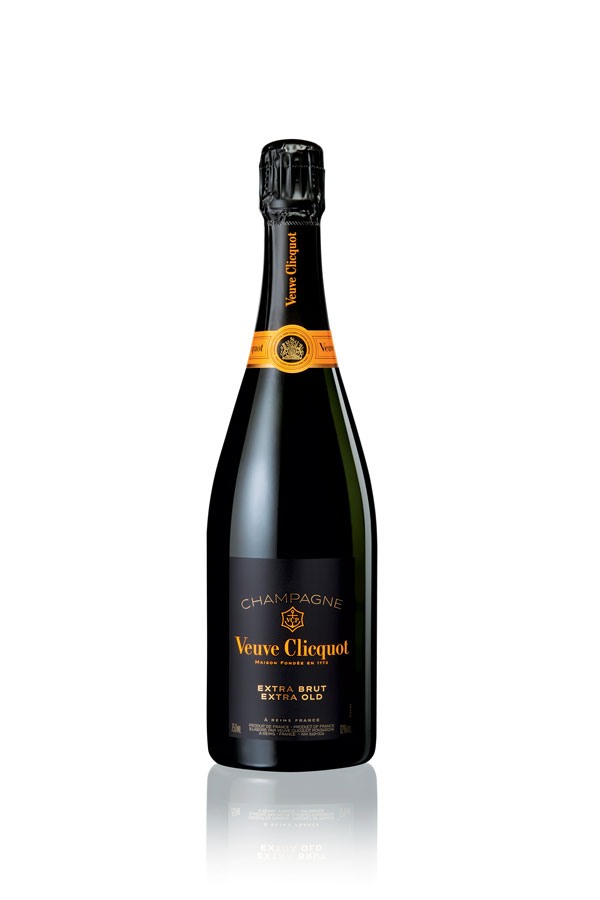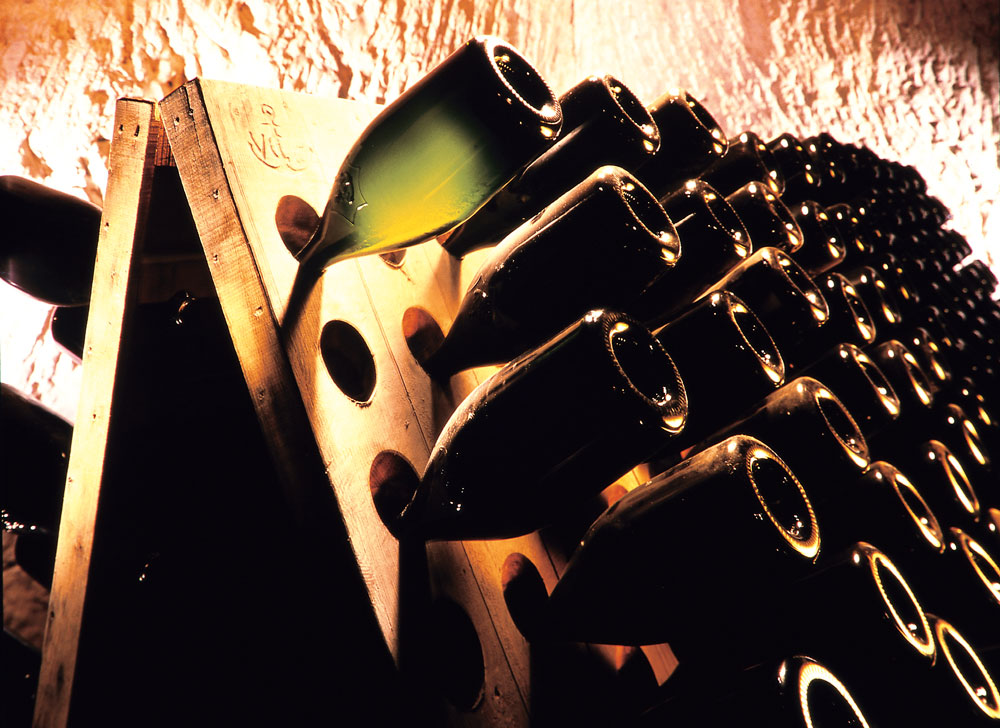Veuve Clicquot's Latest Creation: Extra Brut Extra Old
Jun 30, 2017

The driest Champagne yet introduced by Veuve Clicquot is the winemaker’s new Extra Brut Extra Old, a blend of the reserve wines that are the heart and soul of Veuve Clicquot Yellow Label. Six reserve wines produced between 1988 and 2010 are blended, and the result is aged for a further three years in a special double-maturation process. Extra Brut Extra Old is creamy and intense, yet boasts a fresh, mineral-purity finish. Over a glass or two of this new premium Champagne, Veuve Clicquot cellar master and mastermind Dominique Demarville and #legend chatted about the universe Veuve Clicquot and its competitors move in, and the obsession among earthlings with low-dosage Champagnes.
What went into making Extra Brut Extra Old?
The first thing we had in mind was to create a wine extracted from our beautiful collection of reserve wines. I first tasted the reserve wines when I joined Veuve Clicquot in 2006 and I was really impressed by its quality, its purity and minerality. And when we decided to create this new Champagne, to explore the category of a low-dosage Champagne, it was natural for me to use this capacity, this character of the reserve wine with its delicate texture. That’s why we got this idea. We started to think about this new Champagne in 2011 and the target was to make a Champagne with enough creaminess, but with a very bright finish. So we tried several blends with different reserves and different percentages of the varieties. And gently we achieved the perfect balance with vintages from 1988 to 2010 – and it’s the wine you’re tasting today.

When you first tasted Extra Brut Extra Old, was it exactly how you imagined it should be?
My two objectives were to make a Champagne with purity – very linear, very dry – at the same time with a very delicate smoothness and texture on the palate. And I wanted to get a perfect balance between these two components of the Veuve Clicquot style with creaminess and freshness.
When’s the perfect time to drink the wine?
The wine is ready now, definitely. It’s good to drink now, but it will be able to age very, very well.
How does Extra Brut Extra Old compare with Yellow Label? Is it a superior Champagne?
It’s different. For me, the best image of the Veuve Clicquot style is Yellow Label. If you want to drink the best of the best of Veuve Clicquot, you must drink Yellow Label. But Extra Brut Extra Old is an extraction of Yellow Label, so Extra Brut Extra Old will not have the same complexity, will not have the full body of Yellow Label. It’s deeper, longer than Yellow Label. I won’t say the wine is better, but it’s different.

Dom Pérignon also creates different expressions of its wines, and calls them their Plénitudes.
I think that in Champagne, we love to innovate and explore new territories. And when I look at Veuve Clicquot’s galaxy, you have in the middle Yellow Label, the sun, which has the perfect balance amongst the four pillars of the Veuve Clicquot style: full body, finesse, creaminess and intensity. What we are doing alongside it is to create new planets, which are, of course, in connection with Yellow Label and take something special from Yellow Label. In Extra Brut Extra Old, we push the purity and creaminess to the maximum.
Last year you launched Veuve Clicquot Rich. Is that a more fun way to introduce Champagne?
Of course. Champagne is a drink of celebration. And Rich comes from this idea. Rich is an opportunity to dedicate the Champagne to the cocktails, to mixology. When I was travelling all over the world, sometimes I’d meet bartenders or mixologists who use Yellow Label or a vintage to make a cocktail. But we don’t make these wines for people to make cocktails. And that’s why we had the idea to create a new Champagne which is very sweet, but it’s perfect for cocktails.

Is it in any way like Moët & Chandon Petite Liquorelle from the 1980s?
That wasn’t a Champagne, though. It was a liqueur. It was totally different. I remember very well this Petite Liquorelle. It was very exciting. I think they’ve stopped it now. It was a very special drink dedicated to cocktails but it wasn’t a Champagne. Rich is a Champagne. It’s quite a different approach although the motive is the same. The objective is to reach the people who love cocktails. Rich is sweet, with bubbles, and the taste is more of tropical fruits, the yellow fruits which is very interesting to use in a cocktail.
Low-dosage Champagne has become a trend. Why so?
Several reasons, I think. In the mind of some people it’s more natural to drink low-dosage Champagne. For some others, it’s a question of health. They don’t want to drink something too sweet. Sommeliers are also looking for this kind of Champagne because it works very well with food.
Which Champagne is your favourite?
It’s a tough question because it’s like a choice between children. I love all of them but it depends on the experience. If I drank Veuve Clicquot on the moon, I will bring a bottle – not a bottle, a magnum – of Yellow Label to make sure I will never forget the signature of Yellow Label.
This article originally ran in the July 2017 issue of #legend magazine.



























